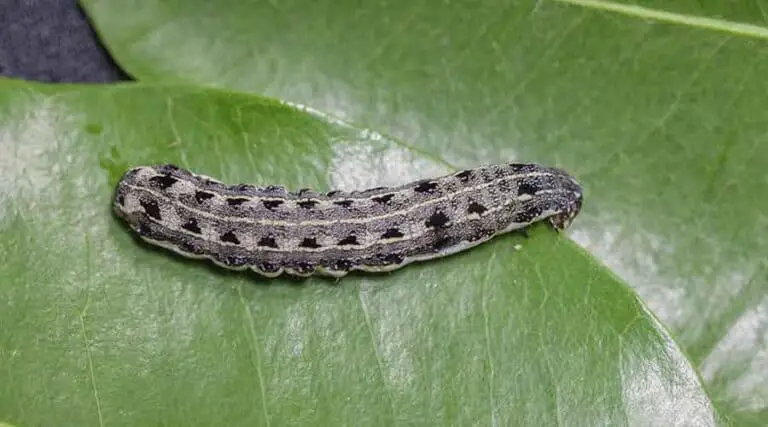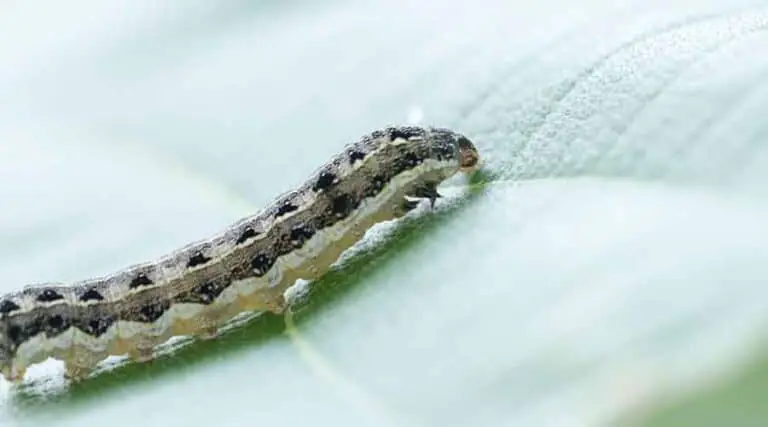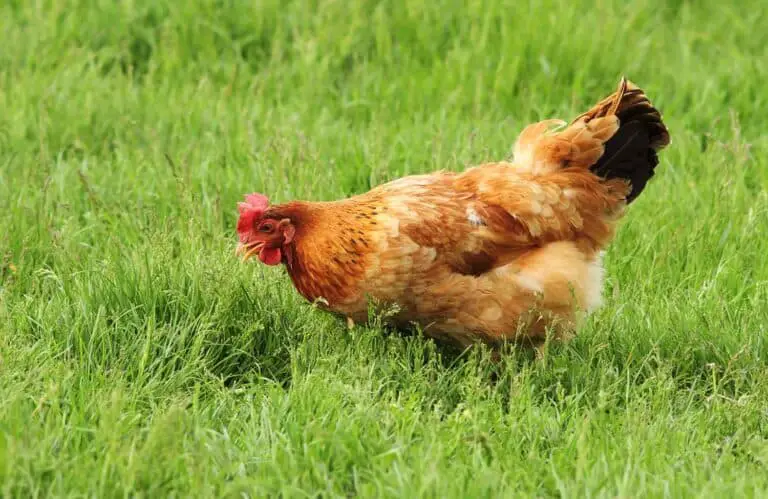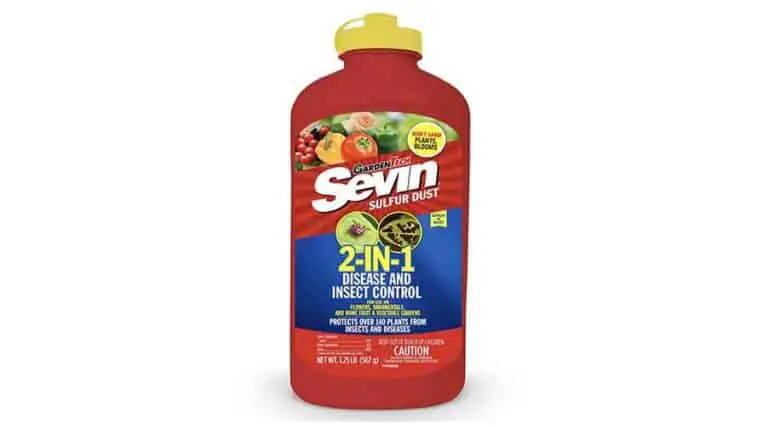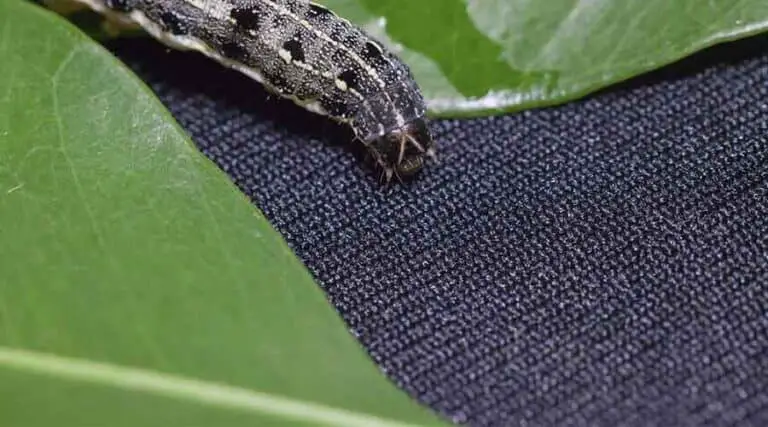What Do Cutworms Eat: A Concise Guide to Their Diet
Cutworms are a type of caterpillar known for feeding on the stem and roots of plants, causing significant damage to crops and gardens. These pests eat a wide variety of plants, targeting both young shoots and the foliage of mature plants. Their feeding habits can be devastating to farmers and gardeners alike, as they can quickly destroy an entire crop or flower bed in just a short amount of time.
There are several species of cutworms, and each has its own preferred food source. Some species, like the army cutworm, have a diverse diet and can feed on plants like cheatgrass and crops such as wheat, sunflowers, and alfalfa. By understanding the eating habits of these destructive pests, growers can take appropriate measures to prevent damage and protect their plants.
Effective control measures for cutworms may include the use of pesticides, biological controls, and maintaining a healthy balance of predators in the ecosystem, which includes species like birds and tachinid flies that are known to eat cutworms . By staying informed and taking preventative action, farmers and gardeners can minimize the impact of cutworms on their plants.
What Are Cutworms
Cutworms are a type of caterpillar known to damage and destroy various plants, especially those in gardens and agricultural fields. They belong to the family Noctuidae and mostly feed at night, making it difficult for gardeners and farmers to monitor their activities.
There are several species of cutworms, such as the variegated cutworm (Peridroma saucia) and the greasy cutworm (Agrotis ypsilon). These caterpillars come in different colors and patterns, but all have a similar cylindrical shape and grow up to 5 centimeters in length.
Cutworms go through four stages in their life cycle: egg, larva, pupa, and adult moth. During the larval stage, cutworms cause the most damage to plants as they feed on stems, leaves, and roots. Some cutworms even climb the plant to feed on higher parts, while others stay near the base.
The primary diet of cutworms consists of various plant materials, most notably the leaves, stems, and roots of their host plants. They are known to target a wide range of plants, including onions, tomatoes, lettuce, corn, and other crops. Their voracious appetite can lead to significant losses in gardens and fields if left uncontrolled.
One notable behavior of cutworms involves wrapping themselves around plant stems, cutting them off entirely, and causing the plant to fall over. This action leads to the name “cutworms,” as they are known to sever plants at their base.
To manage cutworm populations, various control methods are employed such as using barriers, handpicking, and applying chemical insecticides when necessary. Understanding the life cycle and feeding habits of cutworms is crucial for implementing effective control strategies in gardens and fields.
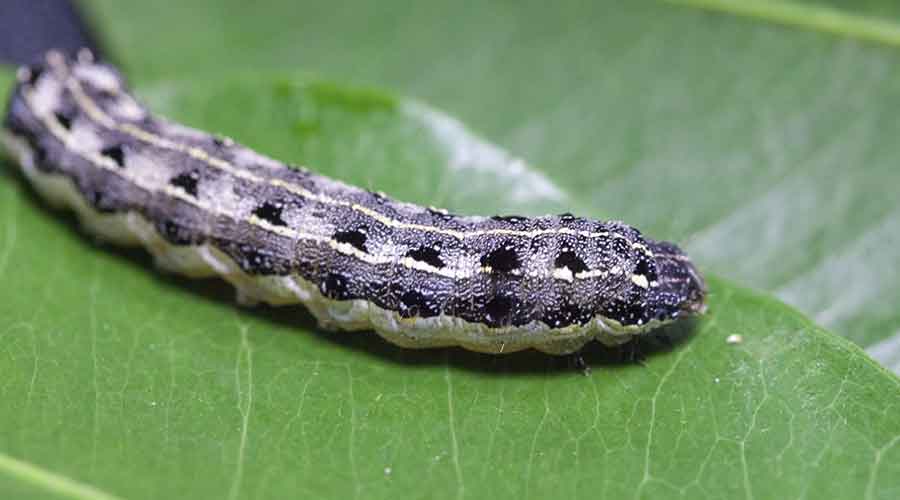
Cutworms’ Diet
Cutworms are nocturnal, soil-dwelling caterpillars that feed on a wide range of plants. Their diet consists primarily of the stems and leaves of various plant species. In this section, we will explore the plants that cutworms commonly prey upon, their preferences, and variations in their eating habits.
Plants Preyed Upon
Cutworms are known to feed on various types of plants, targeting both economically important crops and native vegetation. Some common plants they target include:
- Corn
- Wheat
- Tobacco
- Cotton
- Tomato
- Cabbage
- Lettuce
- Peas
- Beans
These pests can cause significant damage to young plants, cutting through their stems at or below the soil surface.
Preferences and Variations
Cutworms’ preference for certain plants often depends on factors such as geographical location, species, and availability. For example, the black cutworm, Agrotis ipsilon, is more efficient at converting soya beans into insect tissue than other plants in their diet.
The variegated cutworm, Peridroma saucia, shows differences in its development when fed on various plants, such as peppermint monoterpenes. Feeding on these compounds reduces the growth of the larvae, indicating a preference for other plants in their diet.
Other factors impacting their diet preferences may include environmental conditions and competition among cutworm populations. By understanding these preferences and variations, it becomes possible to develop targeted control strategies to minimize the damage caused by these pests.
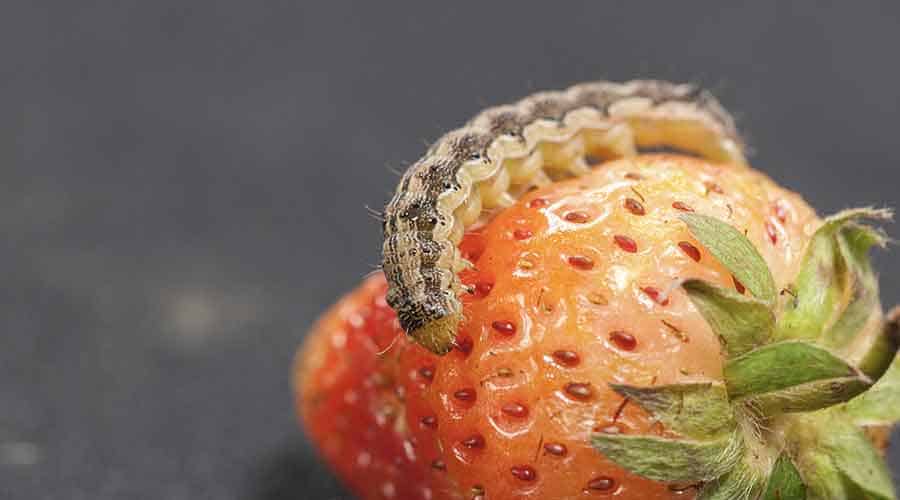
Damage Caused by Cutworms
Effects on Plants
Cutworms are the larvae of certain moth species that feed on the stems and foliage of a variety of plants, including crops and weeds. These pests can cause significant damage to plants, particularly to their young and tender seedlings. The damage is often characterized by severed stems, defoliation, and reduced plant growth.
In some cases, such as with the army cutworm, high rates of parasitism can exacerbate crop damage as the parasitized cutworms feed more and longer than unparasitized ones. In the case of black cutworm larvae, they can cause damage to various species of crop plants and weeds, including corn.
Economic Impacts
The economic impacts of cutworm damage can be considerable, particularly in agricultural settings where they target crops like corn, wheat, and other staple foods. Damaged plants may suffer from reduced yield potential or even crop loss in severe infestations, leading to financial losses for farmers.
To mitigate the damage caused by cutworms, various control methods are employed, such as the use of entomogenous nematodes in the case of black cutworms, as suggested by this study. These methods can be costly and may require additional resources, further contributing to the economic impact of cutworm infestations.
Additionally, the prevalence of cutworms can lead to a higher demand for pest control and management services, which may also increase costs for farmers and, ultimately, affect the overall agricultural economy.
Managing Cutworm Infestations
Cutworms are common pests that can cause significant damage to a variety of plants, including crops and ornamental gardens. In order to effectively mitigate the impact of cutworm infestations, it is important to understand their biology, life cycle, and feeding habits. Strategies for managing cutworm infestations typically involve the use of biological control agents, cultural practices, and chemical insecticides.
Natural Predators
There are several natural predators that can help control cutworm populations in the environment. These predators include:
- Birds: Various bird species feed on cutworms, including robins, sparrows, and blackbirds.
- Ground beetles: Many species of ground beetles prey on cutworm larvae as well as other insects.
- Predatory bugs: Assassin bugs and damsel bugs are examples of beneficial insects that prey on cutworms.
- Nematodes: Some species of parasitic nematodes can infect and kill cutworm larvae, reducing their populations.
Encouraging the presence of these natural predators in your garden or farm can help keep cutworm populations in check. This can be done by planting cover crops, providing habitat for predators, and minimizing the use of broad-spectrum insecticides that can harm beneficial insects.
Pest Control Methods
In addition to biological control, there are several other methods that can be employed to manage cutworm infestations:
Cultural practices:
- Rotate crops to disrupt the cutworm life cycle and reduce the likelihood of infestations.
- Till the soil in the fall and spring to expose cutworm larvae and pupae, making them more susceptible to predation and desiccation.
- Use trap crops, such as mustard or radish, to attract cutworms and draw them away from your primary crops.
Physical control:
- Install physical barriers, such as collars made from cardboard or plastic, around the base of plants to prevent cutworms from feeding on stems and roots.
- Hand-pick cutworm larvae found on plants or in the soil and dispose of them in soapy water.
Chemical control:
- Use targeted insecticides, such as those containing the active ingredient Bacillus thuringiensis (Bt), to control cutworm larvae. Bt is a natural soil bacterium that produces a toxin lethal to certain caterpillars, but is non-toxic to humans, pets, and most beneficial insects. Apply Bt according to the product label instructions for best results.
- For more severe infestations, consider using synthetic insecticides, but be sure to follow all label instructions and adhere to local regulations and guidelines.
Following these guidelines will help you to effectively manage cutworm infestations and protect your plants from damage. Remember to regularly monitor your plants and soil for signs of infestation, and employ the appropriate control measures as needed.
Conclusion
Cutworms are known for their destructive feeding habits, causing significant damage to many types of plants. Primarily, they feed on the foliage and stems of plants, creating semicircular areas eaten from the edges of the leaf or holes in the leaves 1.
Some studies have shown that cutworms tend to have preferences for specific plant types. For instance, one experiment demonstrated mustard oil in cruciferous plants as an attractive factor for cutworm feeding 2. Additionally, in dry localities, cutworms have been observed to consume more food to obtain moisture 3.
Although cutworms can be harmful to plants, various methods can help deter or control their impact. For example, the use of certain gaultheria oil as an insecticide and growth inhibitor has been found effective in limiting the damage caused by black cutworm, Agrotis ipsilon 4.
Understanding the feeding habits of cutworms is essential for developing effective pest control strategies. The ongoing research on their behavior and preferences can lead to a better understanding of their impact on agriculture and help to determine effective strategies for managing their populations.

